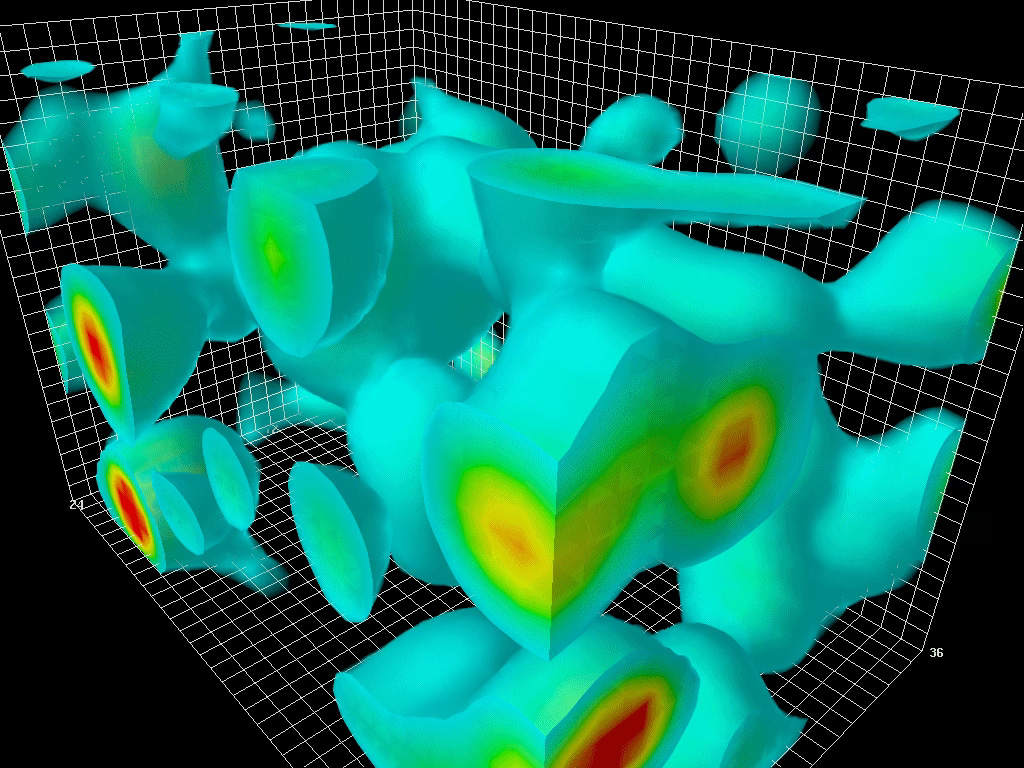This week, I thought I’d write about one of my favourite physics gifs of all time. I’ve attached a still of it below, but you can watch the whole thing here.

I love this gif because it completely goes against what I knew the first time I saw it: that space is a vacuum, and nothing exists inside a vacuum. That’s often what we’re taught at school, and indeed it was the consensus until the birth of quantum mechanics, which revealed that a perfect vacuum in space is unphysical and cannot exist.
To understand why this is the case, we have to look at quantum field theory: a branch of theoretical physics that deals with particles at the smallest scale. The theory posits that space is filled with fields, and what we observe to be particles, like electrons, are actually excitations of these fields. Even within what we might consider a vacuum, devoid of all matter and atoms, these fields still exist. What you’re seeing in the gif above is a computer simulation of a cube of “vacuum” about a millionth of a billionth of a metre; the fields appear to bubble and fluctuate at random, giving rise to particles which spontaneously appear and disappear.
To be more precise, the field has to obey Heisenberg’s uncertainty principle, a cornerstone of quantum mechanics:
It states that the field’s energy and time are intrinsically related, such that if the uncertainty in a time interval is small enough, the uncertainty in energy would be large enough to temporarily create “virtual particles”. In addition, the energy fluctuations can never be zero.
But why should we concern ourselves with random quantum energy fluctuations if we can't even see or feel them? Enter the Casimir effect: a measurable force which arises from the accumulation of all these vacuum fluctuations. Discovered by the Dutch physicist Hendrik Casimir in 1948, we’re starting to realise its implications in emerging fields such as nanotechnology. One example is creating a “quantum trap” for metallic components small enough to be inside your computer, where they could potentially improve performance and efficiency.

